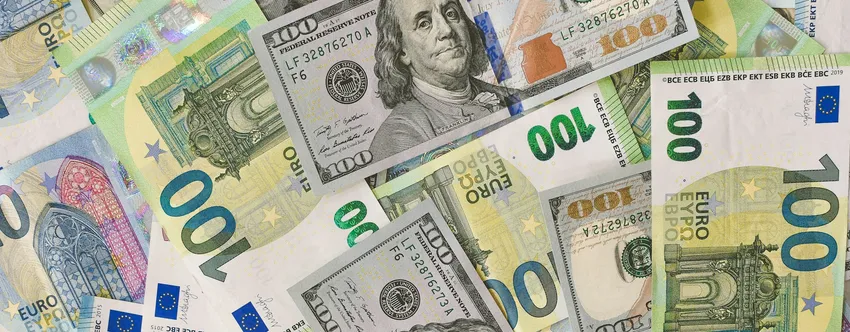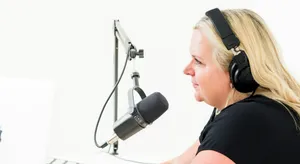Mar 20, 2025
How to Monetize Your Podcast in 2025

Starting a podcast can feel like you’re stepping into a whole new world of creativity. You get to share stories, connect with interesting guests, and reach people in ways you never saw coming. Wouldn’t it be great if you could earn income from these recordings as well? That’s where monetizing your podcast comes into play. By choosing the right path, it can turn from a fun passion project into a steady money-maker. #Podpacer can help streamline some of these steps, but the key is knowing what works for your specific style. It’s all about giving true value to your audience so they keep coming back and maybe even pitch in financially. This guide explains different ways to collect revenue without turning your show into a giant ad break, so you can keep that friendly vibe your listeners love.
Understanding Podcast Monetization
Monetizing a podcast is basically turning your episodes into an income source. It’s not magic or luck—it’s about blending creativity with some smart moves. People tune in for your stories and advice, so why not offer them extras or pair up with brands that add value to their day? This approach can help cover your expenses, from mics and editing software to marketing. It also shines a light on your dedication, since generating revenue often means putting in extra effort to make each episode shine. The big point is to keep your authenticity. When listeners feel like you’re forcing ads, they might tune out. But when everything fits naturally, your show can stay genuine and profitable.
What Is Podcast Monetization?
Podcast monetization is the way a host collects income from recorded episodes. That might include brand sponsorships, listener contributions, monthly memberships, or even selling custom products. There’s no single recipe that fits everyone. A tech talk show might feature ad spots from software companies, while a foodie podcast might partner with cookware brands or local restaurants. The key is picking options that match the show’s character so the ads or promos feel genuine.
Many hosts also use their podcast to build a reputation. If they’re known as an expert in a specific field, that trust can lead to speaking gigs or product sales. Some folks turn their audio content into e-books or online courses. Each step can open doors for extra income without losing the personal feel that draws the audience in. In the end, podcast monetization should be about bringing value to listeners while covering expenses and boosting growth. Learn more about earning from podcasting.
Why Monetizing Your Podcast Matters
Turning a show into an income stream rewards hard work and encourages higher production value. Having a budget can mean better microphones, editors, or occasional travel for unique guests. That makes the listening experience richer, which often leads to bigger downloads and loyal followers. Plus, getting paid to create doesn’t have to feel corporate. When you pick sponsors or methods that synchronize with your podcast, you can keep your artistic spirit alive.
Earning money from your show can also give you more time to produce quality episodes. Instead of juggling extra jobs, you can focus on research, scripting, and audience interaction. People will sense that dedication and engage more. It’s a nice cycle: you invest in better content, listeners stay because they love the experience, and sponsors or supporters keep stepping in. Monetizing matters because it helps you turn your passion into something sustainable—something that keeps on growing along with your creativity.
Different Ways to Monetize Your Podcast
There isn’t just one route to earn income from a podcast. You can try partnerships, fan contributions, or even exclusive memberships. Each tactic brings its own flavor, so picking the right mix depends on your style and the folks who tune in. One show might thrive on brand sponsorships, while another sees more success with Patreon memberships. But the main idea is to flow naturally. You want your listeners to feel at home, not bombarded by sales pitches. Below are several methods that can help you form a revenue path without derailing your show’s unique vibe.
1. Podcast Sponsorships
Sponsorships rank high for podcasters seeking regular revenue. A sponsor is usually a brand that pays you to mention or describe their product during an episode. Some sponsors send a script, while others let you ad-lib so it feels more natural. It can be at the start (pre-roll), the middle (mid-roll), or the end (post-roll). The secret is matching sponsor to audience. If your listeners care about fitness, a workout gear brand or a healthy snack company might be a great fit.
- Pre-roll: A quick mention right at the start
- Mid-roll: A short discussion in the middle
- Post-roll: A final mention toward the end
Before pitching sponsors, it’s helpful to know your download numbers, social media reach, and how people engage with your show. Companies want to see evidence that you can connect them to new customers. There’s also the question of trust: your audience appreciates honest suggestions. If you plug a product you wouldn’t actually use, they may pick up on that. Staying genuine protects your reputation and keeps fans interested in what you have to say.
Sponsored segments don’t have to hog the entire show. Sprinkling short mentions or creative chats about a brand can feel more personal. When that ad is relevant and the brand sense is authentic, it doesn’t disturb the flow. As time goes on, you might land long-term sponsor deals, which can give you a decent financial cushion to keep producing episodes.
2. Listener Donations and Crowdfunding
Some hosts prefer a grassroots approach, leaning on their audience for direct support. This can happen through platforms like Patreon or Buy Me a Coffee, where fans chip in to keep the show running. It’s often popular with podcasts that foster a community-based vibe. If people feel like they’re part of a friend circle, they’re more willing to contribute.
Fans who donate might also appreciate small rewards. A shout-out during an episode or bonus content can be enough to make them feel special. This approach helps you keep creative control because there aren’t outside sponsors influencing what you say. Plus, it adds a sense of unity. Listeners know they’re pitching in for better gear, editing, or just to encourage you. When they see how their donations shape the final product, they’re more likely to keep supporting your efforts.
Crowdfunding is a flexible path. You can set membership tiers or allow one-time tips. It’s a lot like building a virtual tip jar, letting fans show gratitude in a tangible way. Just be sure to keep them updated about how their donations are spent and thank them regularly. That openness makes the relationship stronger and shows you appreciate every bit of help.
3. Subscription-Based Models
Memberships give loyal fans a chance to enjoy extras that general listeners don’t get. Maybe they can listen to episodes early or enjoy exclusive Q&A sessions. This model works well when folks crave deeper insight from your show. They’re willing to pay a small fee each month because they value your perspective.
You can manage memberships through dedicated platforms or your own website. Many services let you automate things like monthly billing, which simplifies the entire process. Subscribers can see how their money directly supports better content and more advanced production. On your end, it’s a predictable income that keeps the lights on.
To make memberships extra appealing, many podcasters offer behind-the-scenes tidbits. For instance, a cookery podcast might share favorite recipes in more detail, or a lifestyle show might post unfiltered chats with guests. The key is delivering real bonuses that make paying the monthly fee worthwhile. Keeping these perks fresh also helps keep subscribers committed for the long haul.
4. Selling Merchandise
Merch is a fun way to turn listeners into brand ambassadors. T-shirts, mugs, or stickers can carry your logo or a catchphrase that fans love. These items aren’t just souvenirs; they’re conversation starters that point new people to your podcast.
Launching a merch line starts with picking designs that resonate with your audience. If your show centers on comedy, maybe playful cartoon art or witty catchphrases work best. For a more serious topic, a stylish but simple logo might fit better. You can partner with print-on-demand services so you don’t have to stock boxes of T-shirts in your garage.
Promoting your merch can be done through social media or short in-episode mentions. You might also host limited promotions or seasonal collections to spark excitement. With each sale, you’re not only earning money—you’re also building closer ties with your fans. Seeing them share photos wearing your gear can be a big morale boost and might pull in new listeners.
5. Offering Online Courses or Ebooks
Turning your expertise into a paid product is another path to income. If your show leans on teaching or explaining processes, you can expand that knowledge into digital courses or e-books. This lets you go deeper than a typical episode, and people get structured lessons they can revisit anytime.
Whether you’re talking about marketing tips or home gardening hacks, an online class or written guide can bring in extra revenue. It’s also convenient to sell these products on your own website or through platforms that handle payments and distribution.
A good approach is to include real-world examples and step-by-step instructions. Listeners who already trust your podcast’s information will likely trust your course. And once they get tangible results from your lessons, they’ll recommend it to friends. This approach can grow into a stable source of income that fits neatly around your regular episodes.
Setting Up for Monetization Success
Before jumping into ads or merch, it’s wise to lay down some groundwork that supports long-term growth. Getting your show ready for monetization involves setting realistic goals and making sure you know your audience inside and out. It also means organizing your time so you’re not spread too thin. Proper planning can save you from feeling overwhelmed once the revenue options start rolling in.
Building a Loyal Audience
A loyal group of listeners is the heart and soul of any podcast that wants to earn income. These fans share episodes, post glowing reviews, and invite their friends to try your show. One way to grow this crowd is by being consistent: pick a schedule and stick to it so people know when to expect new content. Learn more about podcast production workflow to help maintain consistency.
Interaction helps, too. If someone leaves a thoughtful comment on Instagram, reply and thank them. If a listener sends in a cool idea, consider featuring it in a future episode. You can also run polls or ask questions in your episodes to invite feedback. People love feeling like they have a say in what you produce.
Bringing in guests is another effective method. When a guest appears on your show, they might share the episode with their followers. That can funnel new listeners your way. Over time, these folks might become your most dedicated supporters, especially if they find your content practical or entertaining. Essential questions for podcast interviews can help make these conversations more engaging.
A loyal audience also catches the eye of potential sponsors. Even if your download numbers aren’t huge, sponsors notice strong listener engagement. So focus on building real connections. When people sense that you genuinely care, they’ll be more likely to support you—whether through word-of-mouth or a membership tier.
Choosing the Right Monetization Strategy
There’s no single blueprint for earning podcast revenue. It depends on your niche, personality, and what your followers enjoy. Some hosts run sponsor ads and never touch crowdfunding. Others rely heavily on fan donations or subscriptions because their content feels personal. Figuring out the right path might take trial and error. Learn more about boosting podcast engagement with controversial topics to help increase listener interest.
It helps to keep a close eye on your show’s performance. If you try a short-run campaign for t-shirts, track how many sell and how quickly. If you add ads in the middle of each episode, see if listeners complain or if your download numbers drop. Data can guide you to your best plan.
You can also combine methods. Maybe you start with a sponsor spot and open a small tip jar for fans who want to contribute more. As your audience grows, you might roll out higher-priced membership tiers with bonus episodes. Being open to experimenting keeps your show fresh and your listeners excited about what’s next.
Tools and Platforms for Podcast Monetization
No one wants to juggle a bunch of complicated tasks by hand, especially when there are tools that can handle distribution, analytics, and even memberships all in one spot. Good platforms make it simpler to set up sponsor spots, collect listener donations, or manage monthly subscriptions. They also track important numbers, like how many people listen and where they come from. This information helps you tailor your episodes and attract the right partners.
Podcast Hosting Platforms
Podcast hosting platforms do more than store your audio files. They also send your episodes to directories like Apple Podcasts, Google, and Spotify. A reliable host can give you useful stats, like download counts and listener locations, which you might use to court sponsors. Some paid plans include extra features like automatic episode scheduling or advanced analytics.
When choosing a host, it’s good to think about ease of use and the type of tech support they offer. A friendly user interface saves time, so you can focus on producing great content instead of wrestling with complicated dashboards. If you’re on a tight budget, look for a free tier with enough space. If you’re going for a bigger reach, advanced plans might be worth the monthly fee.
Keep an eye out for the kind of security or file backup options they have. You’d hate to lose past episodes because of a server glitch. Quick load times and minimal downtime matter, too. If your audience can’t access the episode, they might skip it altogether. A good hosting platform sets the stage for everything else you want to accomplish with your show.
Payment Service Providers
Once you’re ready to invite donations or sell extra content, you’ll need a way to collect money. Services like PayPal or Stripe let fans pay with credit cards or balances they already have. These platforms handle the behind-the-scenes details, including security measures to protect both you and the buyer. Low transaction fees can also be a plus, especially if your listeners make smaller contributions.
It’s simple to add a “Support” button or a direct payment link to your podcast’s website or social channels. Immediate and easy options increase the chance people will actually chip in. Some providers also offer recurring billing, which is perfect for monthly memberships and subscription models. A smooth payment experience keeps fans happy and encourages them to return in the future.
Membership Platforms
Membership platforms make it easy to set up tiers that reward fans who give a monthly pledge. A top-level tier might include bonus episodes, while more budget-friendly levels offer early access. The beauty of these services is how they handle a lot of admin tasks, like collecting payments and sending updates.
When creating your tiers, keep them simple so fans don’t get confused. Aim for clear descriptions so listeners know what they’re getting at each level. Once enrolled, they’ll expect some consistent perks—like behind-the-scenes clips or short audio notes with extra tips. Meeting these expectations helps keep members on board.
Here’s where #Podpacer can fit in nicely by offering tools that assist with managing schedules, transcripts, and research. If you’re already juggling multiple hats, a one-stop solution can save you time. Bringing everything together helps you focus on what you do best: talking into the mic with passion and creativity.
Tracking and Improving Your Monetization Efforts
Once you start making money, you’ll want to see which tactics pay off and which ones might need tweaking. It’s not just about the bottom line. Listener feedback, download counts, and even social media chatter can clue you in on how people react to sponsorships, merch, or special tiers. Knowing what works is half the battle, and regularly checking your numbers will guide you in keeping things fresh.
Understanding Analytics
Analytics can feel like a puzzle, but they’re basically just numbers that show what your audience is up to. Some platforms tell you how many people listened, where they’re based, and how long they stuck around before switching off. If you see a spike when you host a particular guest, that might be a sign to invite more voices like theirs.
You can also track the performance of major changes. Let’s say you decide to include a five-minute sponsor spot in the middle. Watch if download numbers take a nosedive, or if you pick up sponsor-related revenue. If everything stays steady, that’s a good sign that listeners are okay with that approach.
Analytics also help you spot trends. For instance, your audience might jump during certain times of the year or certain content topics. Paying attention to these patterns can help you plan episodes more strategically. It’s basically your roadmap for making decisions that keep current fans happy and bring in new ones.
Adapting Strategies Based on Performance
Adapting doesn’t mean throwing out everything you’ve set up. Sometimes it’s as simple as adjusting how often you run ads or changing the style of your merch. Maybe your audience likes fun designs better than minimal ones, or they respond well to shorter ad reads sprinkled throughout the episode. Checking your stats or asking for direct listener feedback can help you fine-tune these parts.
It can also help to run experiments in smaller batches. Try a limited campaign—like a holiday-themed T-shirt or a short-term sponsor—and see if sales or downloads go up. Then decide if it’s worth expanding. Over time, patterns emerge, and you’ll get a feel for what your listeners prefer.
Remember that podcasting trends shift. A method that boosted revenue last year might not click this year. Staying alert and flexible is key. By regularly evaluating your outcomes, you’ll stay on track without feeling stuck in a rut. It’s all about meeting listener needs while reaching your financial goals.
Common Challenges in Podcast Monetization
Earning money from a show often comes with a few snags. It takes time and patience to grow a dedicated community, and competition can feel fierce in popular niches. Plus, balancing authentic content with sponsor demands can sometimes be tricky. Recognizing typical pitfalls ahead of time might help you avoid them or work through them quickly.
Overcoming Audience Growth Barriers
Attracting new listeners can be an uphill climb, but it’s not impossible. Tactics like guesting on other podcasts or teaming up with social media influencers can boost your profile. Cross-promotion works wonders. If you have a friend with a related show, trade shout-outs to introduce each other to fresh audiences.
Also, check if your episodes are easy to find. Do your titles and descriptions give clear hints about what’s inside? If not, potential listeners might scroll right past. Be sure to use keywords that match your content so your podcast pops up in searches. Learn more about podcast SEO tips for discoverability.
Encouraging existing fans to share your show is another potent method. You can run small giveaways or offer perks when listeners tag you on social media. A loyal fan base may be small at first, but with the right hooks, they’ll spread the word. Gains might come slowly, yet consistency and genuineness go a long way toward building a strong community.
Dealing with Monetization Saturation
It’s normal to worry about smothering your show with ads or constant pitches. Nobody wants to feel like they’re just listening to a string of commercials. Spacing out sponsor messages is one option. Another is rotating them so listeners don’t hear the same sponsor every single episode.
Offering a mix of monetization approaches helps you avoid putting all your eggs in one basket. You might try a little bit of everything—some ads, some listener donations, and maybe a membership plan. That way, if one method stalls, you won’t be stuck.
A personal touch can also smooth the edges of earning money. Thank your listeners for their support, and explain that their generosity fuels your content. When people see a real connection between their contribution and your show’s quality, they usually stay supportive.
Conclusion
Earning income from your podcast isn’t just about cash. It’s also about building a dependable structure that helps you keep making episodes listeners can’t wait to hear. By mixing different techniques—like sponsorships, fan donations, or merchandise—you open the door to fresh opportunities without sounding pushy.
As you experiment, keep an eye on what resonates. Your show might thrive on short sponsor reads and exclusive bonus episodes, or it might lean more on thoughtful listener support. No matter what you choose, be sure to thank your fans and maintain an honest conversation about your podcast’s growth.
When you combine genuine passion with solid strategies, you’re likely to see real results over time. Tools like #Podpacer can ease some of the technical load, but the heartbeat of your show is always your voice and vision. If you stay open to new ideas and keep learning from your listeners, monetizing your podcast can be a rewarding journey that lasts for years. Learn more about podcast promotion services that can help accelerate your growth.
Frequently Asked Questions (FAQ):
How do I monetize my podcast?
You can reach out to sponsors, offer premium memberships or bonus episodes, sell podcast-branded products, or ask for listener contributions through platforms like Patreon or Buy Me a Coffee. The goal is to pick options that fit your audience so it feels like a natural extension of your content.
How much do podcasts make per 1,000 views?
Earnings per 1,000 downloads vary based on factors like your niche, how engaged your listeners are, and the type of ad you run. Some shows see rates as low as $15, while others can hit $50 or more.
How many listeners do you need to monetize a podcast?
Many sponsors start paying attention around 500 to 1,000 downloads per episode in the first month. That’s often enough to show that you’ve got a real audience. But even smaller shows can earn revenue through direct fan support or specialized sponsorships.
Do Spotify podcasts make money?
Yes, Spotify has its own ad platform for eligible shows, plus you’re free to negotiate your own sponsorships or run listener donation programs. The platform offers a wide reach, which can help you grow your fan base and increase earning potential.
Related Posts
See All Posts

Social Media for Podcasts: How to Build and Engage Your Audience
Podcasts have become part of everyday routines, offering stories and insights with just a tap. But with so many choices out there, finding t


Mastering Podcast SEO Techniques: A Comprehensive Guide
In a world where podcasts keep growing, getting noticed can feel like a climb. There's a bright side, though. [Learn more about boost podcas


Top Podcast Promotion Strategies for 2025
Plenty of podcast creators hope to stand out in a sea of audio content. With over two million shows available, it's essential to find new wa
No one knows your podcast like Podpacer
Podpacer is the best way to handle your podcast production. Manage your guests, research and plan your interviews, write social media content with one click, all in one place.


